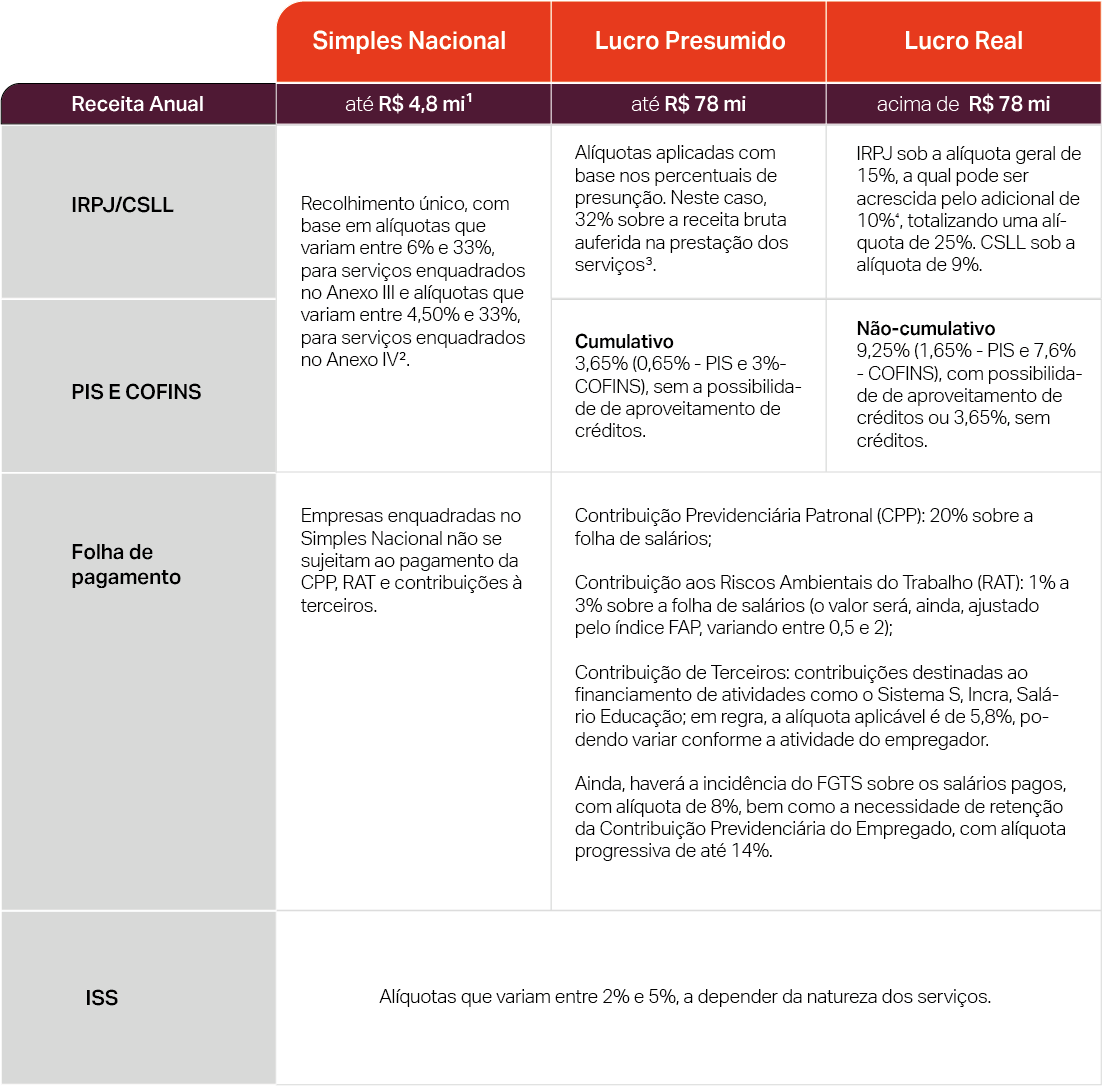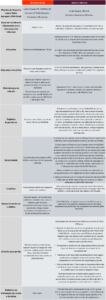What are marketing services?
Marketing services can be divided into several categories which, in short, seek to support/boost sales of products or services, as well as making these experiences more attractive to consumers.
These services range from the creation, planning and execution of sales strategies, content creation for social networks, as well as the possibility of search engine optimization (SEO optimizations), among others.
Marketing service providers generally work through specialized agencies or as regulated professionals (advertisers).
Tax regimes currently applied to these professionals
Currently, marketing service providers can opt for 3 tax regimes: Simples Nacional, Lucro Presumido or Lucro Real.
For each tax regime there is a specific tax burden. Below is a structured summary of the tax burden. Check it out!

[1] Sub-limit of R$ 3,600,000.00 created for the ISS hypothesis.
[2] It is worth mentioning that in order to calculate the tax due for the month, the taxpayer calculates the effective rate (gross revenue accrued in the last 12 months (x) rate set out in Annex II (-) portion to be deducted (/) gross revenue accrued in the last 12 months). Furthermore, if the ratio between payroll and gross revenue in Simples Nacional is less than 28%, Annex V will apply, which imposes higher taxation, with rates varying between 15.50% and 30.50%, according to the bands described (R Factor).
[3] It is important to note that some services can use the reduced rates, based on the exceptions provided for by law/instruction (such as Normative Instruction No. 1700 of 2017).
[4] Incident on the portion of profits that exceeds the annual amount of R$ 240,000.00 (equivalent to R$ 20,000.00 per month).
Impact of the Tax Reform on the service sector
The unification of taxes and the simplification of the collection system are positive steps.
In addition, the Tax Reform seeks to create less distortion of the economic effects of the production chain by adopting the Value Added Tax (VAT) system, i.e. taxpayers will have the full right to use credits and taxation at destination.
The adoption of Value Added Tax (VAT) allows companies to benefit from the right to a tax credit for all the taxes (IBS and CBS) levied in the previous chain, with the right to offset these amounts against the taxes (IBS and CBS) levied on the provision of services.
Complementary Bill No. 68/2024
The first bill to regulate the Tax Reform has been approved by the Chamber of Deputies and is now heading for consideration by the Federal Senate and presidential sanction.
PLP 68/2024 establishes the Tax on Goods and Services (IBS), the Social Contribution on Goods and Services (CBS) and the Selective Tax (IS). The approved basic text included an estimated 26.5% cap on the rate of the future Value Added Tax (VAT).
The proposal states that an assessment will be made in 2031 to check whether the sum of the CBS and IBS rates, which will come into full effect in 2033, will result in a figure higher than 26.5%. In the event that the value is higher than estimated, a new bill will have to be sent by the Executive Branch, in conjunction with the Management Committee, in order to propose a reduction in benefits for sectors or products.
What will change with the approval of the tax reform?
The tax will be levied at a maximum rate estimated at 26.5% of the company’s revenue. It is undeniable that the service sector will suffer a real increase in the tax burden.
The good news for the sector is that the basic text of Bill of Law No. 68/2024, approved by the Chamber of Deputies, provides for a 30% reduction in the aforementioned rate for providers of services of a scientific, literary, intellectual or artistic nature (article 122 of the Bill of Law), which can be taken advantage of by marketing service providers, due to the intellectual development employed in these activities.
In this way, the effective tax rate could reach 18.55%, which should keep the tax burden for this specific service higher, but at a lower level than the general taxation of the sector.
Another important point is the impossibility of crediting payroll expenses, so it is possible to project an increase in the tax burden for providers of these services.
The table below summarizes the main changes compared to the current system:

The comparative table above shows the changes that could occur in the service sector with the Tax Reform, specifically for marketing service providers.
Did you like the content? We hope it has clarified what will change for marketing service providers with the Tax Reform.
If you have any questions, click here and talk to our team of experts.








